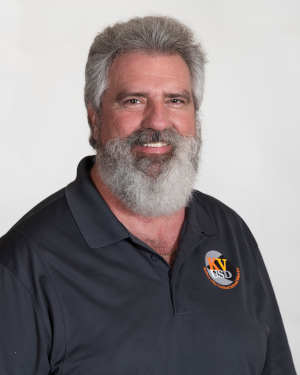- Dave McQueen
- Posted On
Putting Students First: A little good news in education

While the pandemic keeps grabbing all the headlines, many educators throughout Lake County are quietly doing inspiring work with local students, helping them build resilience while also teaching them the academic skills they need to be successful.
We also have many unsung heroes who do not work directly with students, but who nonetheless make sure students and staff have the resources they need to keep moving forward.
Collecting cans to help others
Kelseyville High School teacher Mr. Bailey recently congratulated his first-period class with breakfast at Woody's for collecting 600 cans of food during the Thanksgiving food drive.
Mr. Bailey’s students’ efforts amounted to 40%t of the whole KHS collection effort! Every donation counts and I'm proud of all the KHS first-period classes who participated. Together, they donated 1,500 cans to people in our community.
Big thanks to Freaky Fast Oil Change
Sometimes teachers, coaches, and athletic directors reach out in the community to help students. Big thanks to Freaky Fast Oil Change in Lakeport for supporting KHS Athletics. Owners Brian and Marilee Manson donated a dollar for each oil change in the month of December, which added up to $333!
Helping students who need a little extra structure
Our new Kelseyville Elementary School counselor, Nicole Sherrell, implemented a check-in/check-out system. CICO provides more structure, accountability, and motivation to help students improve behaviors. Most students on CICO have been demonstrating big improvements so far.
Working hard behind the scenes
Sometimes our less visible employees make huge contributions. At Kelseyville, we have a tech team of two — and they keep the entire district running.
It is truly incredible not only the volume of work they have taken on during this whole COVID mess, it is also impressive how they continually seek ways to help us use technology to make us more efficient and provide better quality results.
Recently, Bill Grossner figured out how to connect data from two different systems, saving our team countless hours of input by hand.
Testing, testing and more testing
Another team that deserves high praise is our nursing and district staff who have administered hundreds of COVID tests.
As you probably know, public school districts must comply with guidelines set by the California Department of Public Health and this includes a whole bunch of testing. To keep teachers in the classroom, testing staff have come in early and stayed late.
To make it more convenient for staff and students, nursing staff have traveled to school sites rather than requiring folks to come to a central testing location.
Modeling great attitudes
Some of the most impressive staff are those who continually share their positive attitudes with colleagues, students, and families. When the rest of us are at the end of our ropes, these folks give us the warm smile and words of encouragement that help us turn our day around.
Guy Fieri Foundation grant for KHS Culinary Program
Finally, in case you missed it, our culinary arts teacher Tami Cramer reached out to the Guy Fieri Foundation and, wow, did that make a difference in the lives of our students!
A $7,270 grant from the Guy Fieri Foundation has paved the way for KHS culinary arts students to fully participate in a newly formed local chapter of the Family, Career and Community Leaders of America, or FCCLA, a national career and technical student organization.
So, I guess I just want to say thank you. Thank you to our wonderful staff. Thank you to all the families who’ve been patient when we’re under pressure to perform in ways we couldn’t have predicted before the pandemic. Thank you to our wonderful community supporters for their financial contributions that make new opportunities available to our students.
From little things like warm smiles to big things like donations to the day-in, day-out dedication of people who continue to give when they don’t have much left in the way of emotional reserves, it all counts. It all makes a difference.
Let’s keep helping each other and helping our students.
Dave McQueen is superintendent of Kelseyville Unified School District.


 How to resolve AdBlock issue?
How to resolve AdBlock issue? 




